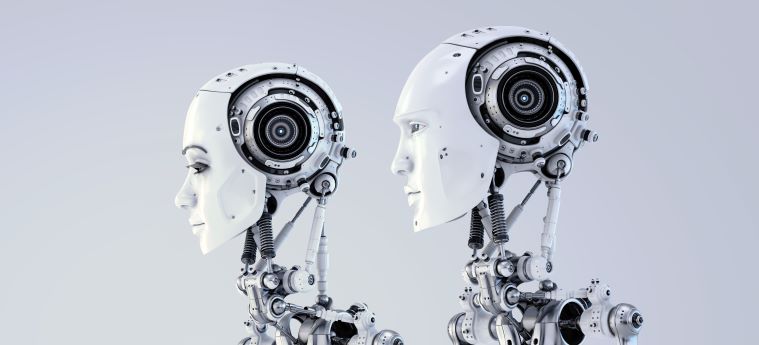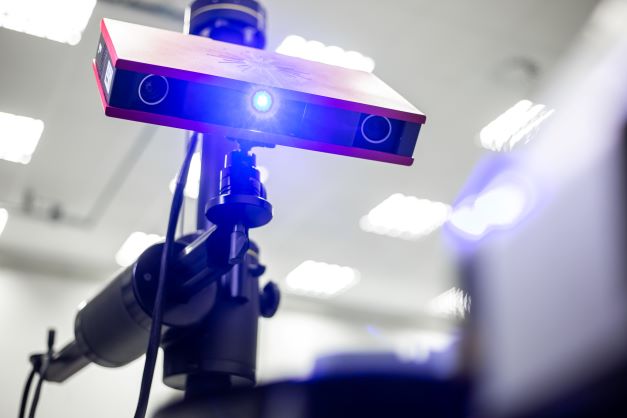Get to know Digital Twin Technology when manufacturing objects have twins in the digital world

“How will it be if we can accurately simulate the entire world and wait to see what happens in the future?”
It's a simulated world where we can experiment at our own pace. Where to change and where to adjust to achieve better results and prevent unwanted things. Would it be good if we knew what to do in this one minute for the best possible future, today might not even be the whole world? But did you know that we can simulate things this way? with a technology called “Digital Twin”.
The Digital Twin is … the name given to the concept of digital re-production or mockup of physical things. But there is also a mechanism that connects to real objects through a sensor system that keeps information on the physical state of the object in real-time, making the model like moving the object into the digital world.
Whenever there is a realistic object model what follows is the ability to examine the state of objects in detail, led and guided by the visual media. and the ability to simulate a situation that if the environment or the state of any point within the object has changed what kind of effect will it have on the object? - What's more? the Digital Twin of each object can then be connected to form a small simulation system. This allows us to simulate and predict possibilities in a more complete picture.
For businesses, Digital Twin's capabilities like this mean they can effectively monitor adverse events. Model events and plan actions such as estimating when maintenance should be performed, creating a scenario, checking the interoperability of multiple machines and etc. In addition, the Digital Twin may be able to help alerting and initiates the process of automating operations when the state of the object indicates that an action is required on the systems.

What technology did we use to create the Digital Twin?
Digital Twin's main idea is to model objects in the digital world. Both in the form of images and data, and then in use will be extracted to analyze. create a simulation that visualizes. Therefore, it should be enough to visualize that Digital Twin is a combination of many technologies, including
· 3D visualization technologies, or VR and AR, shape objects in the digital world.
· Sensor technology and the Internet of Things (IoT) are responsible for the data connection between the real world and the digital world. including updating new information to Digital Twin always in Real-time.
· Data analysis technology, this may consist of several technologies, such as Machine Learning (ML) to predict potential events and Software Analytics to maintain the functionality of the software in the system.
· Modeling technologies such as Artificial Intelligence (AI) and Spatial Graph to simulate the overall picture of the system and simulate what is likely to happen.
· Infrastructure technologies (IT) for inter-connecting systems such as Cloud, Edge Computing, Automation and Digital Security. This allows all technologies to work together well and safe.
Practical Examples of Digital Twin in Industry.
Digital Twin is a technology concept that is on the same wavelength as the Industry 4.0. By following these simple best practices of company and country leader, you will be able to reap the benefits of digital twin in a scalable and progressive way. Are you ready?
In 2017, Gartner, a global technology analytical firm, ranked Digital Twin as one of the top 10 technologies to watch. Today, businesses in various industries are adopting the Digital Twin concept. And they continue to use more and more in operational businesses.
NASA is an organization that clearly benefits from being able to carry objects into the digital world wherever they are. NASA started using a technology called “Pairing Technology”, which is known as the Digital Twin family, to help operate it in space. Their major work was in the Apollo 13 mission rescue, and today NASA takes advantage of the Digital Twin eliminating the need for on-site inspections to monitor and plan equipment maintenance far and far in space.
Chevron, one of the major energy companies implementing the Digital Twin, focuses on real-time monitoring of oilfield and refinery equipment status, a technology can be predicting maintenance times and planning to schedule the maintenance. As little as possible without compromising operations, by 2024 they plan to introduce the Digital Twin into the equipment that is needed for all operations. This is expected to reduce costs by millions of dollars.
Singapore became the world's first global digital twin country in 2018 by partnering with Dassault Systèmes (French software corporation where develops software for 3D product design, simulation, manufacturing and other 3D related products) to develop a model of an entire city to help monitor the disasters. City planning and urban management such as planning a parking lot based on the number of residents in the neighborhood and plan the planting of trees to create shades for better environmental planning.
A report in collaborative effort of Mickael Brossard, Sebastien Chaigne, Jacomo Corbo, Bernhard Mühlreiter and Jan Paul Stein from McKinsey’s Operations Practice, McKinsey & Company reported on April 28, 2022 that Digital Twins are increasingly being used to improve future product generations for mankind. An electric-vehicle (EV) manufacturer, for example, uses live data from more than 80 sensors to track energy consumption under different driving regimes and in varying weather conditions. Analysis of that data captured from Digital Twin Technology allows it to upgrade the vehicle control software, with some updates introduced into new vehicles and others are delivered the new software version over the air to existing customers.
In report from McKinsey & Company also cited the developers of Autonomous-Driving Systems, meanwhile, are increasingly developing their technology in virtual environments. The training and validation of algorithms in a simulated environment is safer and cheaper than real-world tests of the Autonomous-Driving vehicles. Moreover, the ability to run numerous simulations in parallel has accelerated the testing process by more than 10,000 times. Incorporating sensor data from real-world vehicles into these tests by developer helps companies to improve the veracity of their simulations and identify blind spots in the virtual test database.

The Future of the Digital Twin.
Ever since the concept of Digital Twin began to attract attention. The associated technologies are continually decreasing in cost. And the readiness for technology exposure among businesses is also increasing steadily. With such a trend - It is now possible that in the future we will see Digital Twin being widely used in various businesses and industries. There are applications to create value in new ways and may be accessible to the level that consumers start to use in everyday life such as the Digital Twin of the car or the network of home appliances.
With ability to monitor status and analyze data, the Digital Twin simulations are like an upgrade in analytics to the next level. This gives businesses, agencies and individuals who get a job a more complete picture of how to make informed decisions. This makes decision making more accurate and smarter from visualization and movement as simulated. The Digital Twin is versatile and can be used for a variety of tasks. It is worth following that as Digital Twin becomes more widely used. How will there be further usage?
The Synergy of Digital Twin and Additive Manufacturing.
A Digital Twin is as defined a digital representation of a physical system with real-time flow of data between them. Due to its simulation capabilities, the method is seen as the future of additive manufacturing. Additive manufacturing is defined as digital technologies that stacks physical layers of materials to build 3D products - The most known application of this is “3D Printing”.

A report from KTH Royal Institute of Technology, School of Industrial Engineering and Management in Sweden conducted by Tor Fagle Shimamura and Douglas Timper remarked in 2021 that the Digital Twin in additive manufacturing has become a topic of interest of many as the method promises to be the next step in its developing component of Industry 4.0. The method of Digital Twin is seen as the future of additive manufacturing. Additive manufacturing is often failed due to a lack of ability today is hindered to accurately predict by its monitor unpredictability and control. Prints of the printing process, an area where the Digital Twin excels in Additive Manufacturing, the question is not if the Digital Twin would be a part of the future of additive manufacturing but rather how that relationship of two technologies combined will look like for better performing outcomes in businesses.
Credit and Source –
· CAT Datacom News & Promotion.
· McKinsey & Company.
· School of Industrial Engineering and Management, KTH Royal Institute of Technology - Sweden.